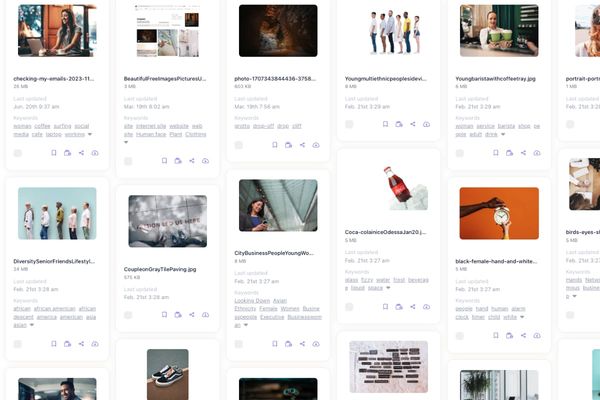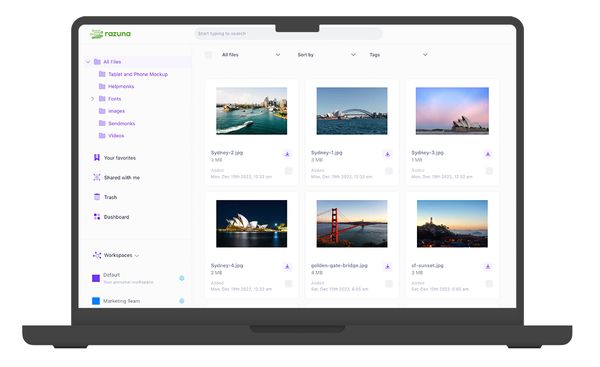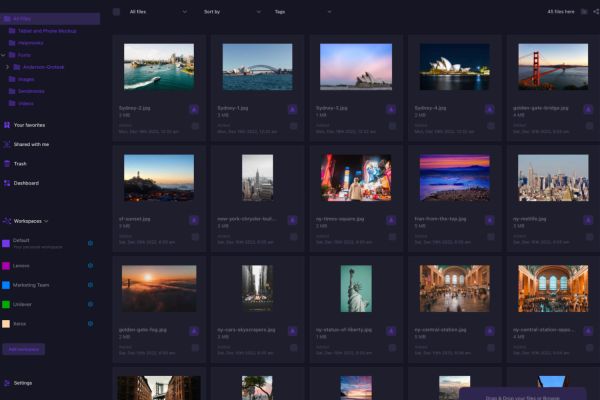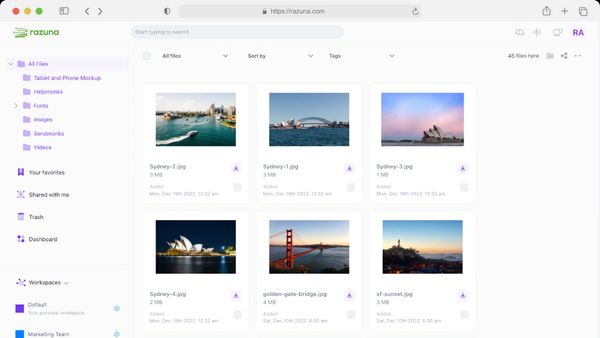
What Is Digital Asset Storage?
What is digital asset storage? This guide to digital asset storage has all the answers. Learn how to implement digital asset storage for all your teams.
Read nowDo you want to preserve your brand's integrity, stay true to its identity, and build customer loyalty and trust? A comprehensive brand asset management strategy with clear brand guidelines is essential. But you also need effective digital asset management to make the most of this.
The link between brand guidelines and digital asset management is the key to better, simpler, and easier brand asset management. This guide explores how you can maximize your brand's potential with this powerful combination.
Before we discuss how to use digital asset management for your brand, let's review brand guidelines.
Your brand guidelines are the rules your teams follow when communicating your brand to the public. They guide your team on how to use your brand name, logo, slogan, and any other brand assets that make up your brand's identity.
Now, consider the importance of brand asset management guidelines for maintaining your brand.
These rules dictate the personality and tone of your brand messaging. They ensure that your brand marketing does not stray from your brand identity.
Without these guidelines, you risk presenting confusing and conflicting brand messaging to your target audience. The risk becomes even more significant when you target different consumer market segments with various types of marketing or across multiple platforms.
With brand guidelines keeping them in check, your team will stay true to the brand every time.
The connection between brand guidelines and digital asset management becomes apparent when you closely examine the top features of a digital asset management system.
Digital asset management, or DAM, is a software solution for managing digital content, including organizing, storing, and sharing it. This includes all digital content, from documents to images, videos, and audio files.

When you incorporate brand guidelines and DAM into your brand asset management strategy, you enjoy both features.
The first step in any brand asset management strategy is to create order out of chaos by centralized storage of all your brand assets. A digital asset management system is a storehouse for your digital assets, including your brand assets.
When brand guidelines are included, all team members can refer to them whenever they need to, without having to navigate to another platform.
The relationship between brand guidelines and digital asset management is at the heart of branding and marketing efficiency. This is primarily due to automation, which expedites every step of the process.
All workflows are simplified so your teams can finalize projects and campaigns in less time, with less effort, and with greater accuracy.
If you want to establish trust and loyalty in your customer base, your brand must remain consistent and true to its identity at all times. That common thread must run through everything from your online marketing efforts to in-store signage, digital billboards, and merchandise.
Brand guidelines ensure consistency in your brand identity and messaging, and DAM provides access to a portfolio of approved brand elements.
Content collaboration is crucial for all your branding and marketing projects to come to life. All teams can access the same content at all times and edit or share it subject to authorization levels. But the more people working on your branding, the more opportunities there are for errors to creep in.
Fortunately, DAM prevents this with version control history, which allows you to go back to earlier versions of content editing. DAM also limits the risk of duplicates, which can confuse users.
Are you ready to take advantage of the most efficient branding combination? This is how you will enhance your brand guidelines with digital asset management.
Not all DAM systems are created equal. While they all offer the basic benefits listed above, the right DAM system will give you even more functionality, better security, and more integrations. Some DAM software is also more user-friendly than others, ensuring faster implementation.
Make a list of the features and integrations you need the most and compare DAM options against this checklist. With Razuna Workspaces, you can create a self-service DAM system for your specific needs. Every action is secure, logged in an audit trail that you can monitor for unauthorized use.
Train your teams to use the software. Before you adopt the new system across the board, check that everyone knows all the features. A DAM system is only of maximum benefit if used correctly and all its features are used.
Some people learn faster than others, and everyone has a preferred learning style. Don't just describe the software's features. Allow your staff to test every aspect of the software before implementing it, and encourage them to ask questions.
DAM software can save time and money by eliminating the need for other software. Razuna's online image editor is an example. It lets users crop, filter, resize, and rotate images and add annotations, all in real time.

Upload your brand assets to the system to access them in a central gallery. You can upload your files to Razuna with no upload limit directly from Dropbox, Google Drive, OneDrive, and more.
Next, classify them into appropriate categories. Brand assets can be categorized according to type (images, videos, audio, etc.), product line, or any other criteria that work for you. Use descriptions, tags, and metadata to make file search and retrieval more accessible.
Customize them with your unique naming conventions to suit your brand, but be sure that all users know what these are. Razuna makes this simple with custom keywords, descriptions, and auto-tagging.
Integrate your established set of brand guidelines into the system. Create a digital repository for all rules and instructions related to your brand's identity, core values, and message. Include examples of the various brand elements and how they should be used.
If you rebrand and change some aspects at any time, remember to amend the brand guidelines accordingly. This will make introducing the changes more manageable for your branding team and reduce the risk of inaccurate brand representations.
It's important to realize that brand asset management is an ongoing process. There's always room for improvement. So, monitor and maintain your DAM system to keep it functional, eliminate discrepancies and duplications, and improve your branding portfolio.
With a single click, Razuna lets you patch and update all your files, even in bulk. This combination of constant vigilance and the best software also helps scale your branding and marketing efforts as your brand grows.
The importance of brand guidelines cannot be denied. They ensure you stay authentic to your brand identity and maintain brand consistency across all your marketing platforms. In this way, they build more trust and loyalty in your brand.
In this guide to brand guidelines and digital asset management, you learned that using a digital asset management system is the most effective brand asset management strategy. Now, it's time to choose the right DAM software.
The Razuna platform simplifies brand asset management with digital tools that help teams adhere to their unique brand guidelines.
Register an account and get started today!

What is digital asset storage? This guide to digital asset storage has all the answers. Learn how to implement digital asset storage for all your teams.
Read now
All files that your business uses is a type of digital asset. This guide explains the various types, what makes them crucial, and how best to manage them.
Read now
File organization is essential for any business. Here are 10 of the best file organization software options for businesses of all types to consider in 2024.
Read now
Team success thrives on effective teamwork. Utilize collaboration tools to enhance team performance. Here is a list of the best online collaboration tools.
Read now
(each free accounts comes with 500 GB space)
